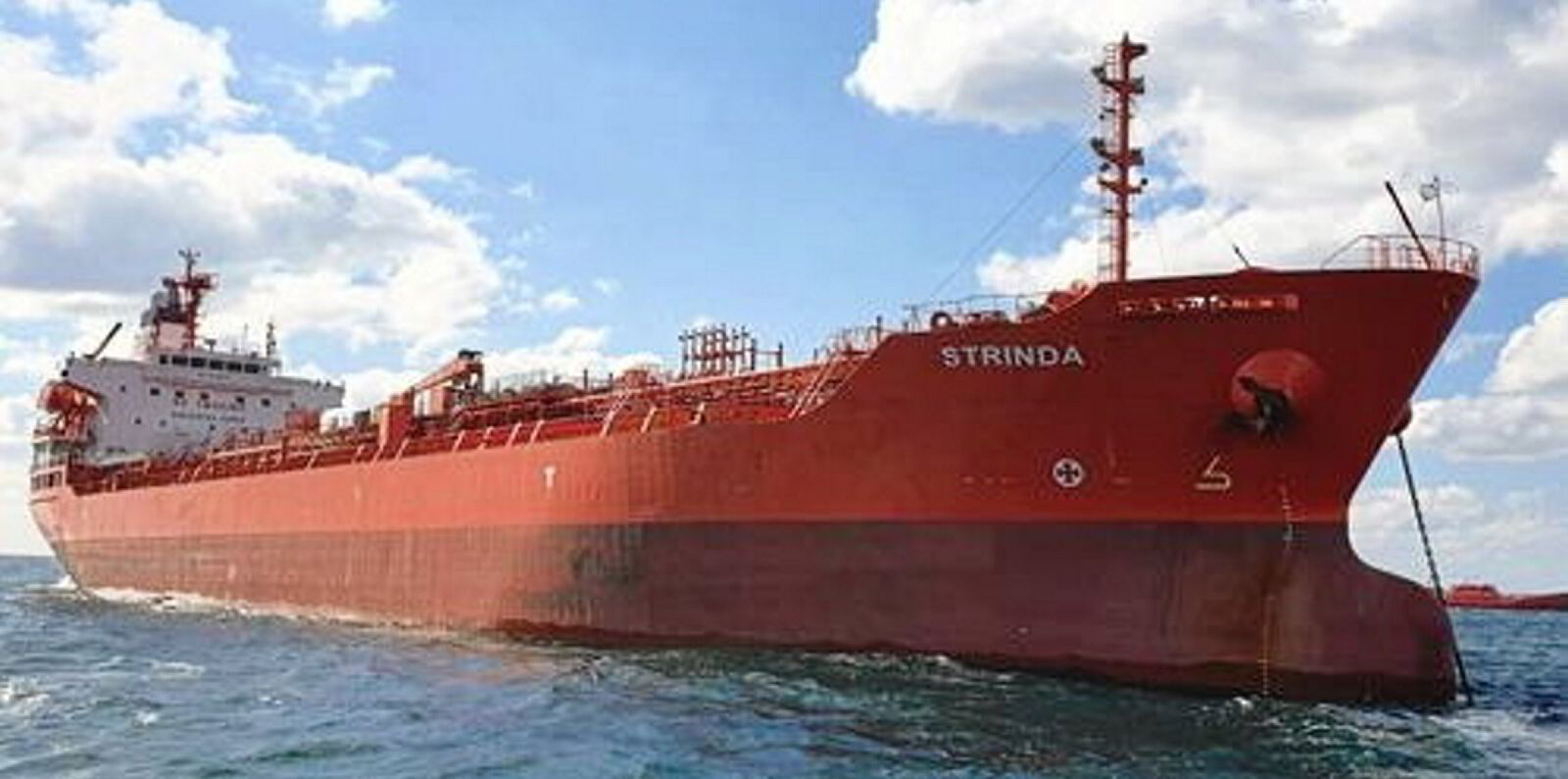Shrapnel from a Houthi missile that hit a Norwegian-owned chemical tanker smashed through the cabin wall of the sleeping master and was found embedded in his pillow, a senior intelligence researcher said on Wednesday.
Oliver Tomac, of the Norwegian Shipowners’ Mutual War Risks Insurance Association (DNK), said the near-miss for the seafarer during the December attack was a sign of “pure luck” that meant nobody had been killed before March of this year.
In a presentation to the International Union of Maritime Insurance conference in Berlin, Tomac showed a photo with the Indian master’s finger poking inside the hole made by the shrapnel about 15 cm from where his head had been resting.
The master also held the piece of shrapnel retrieved from the pillow following the cruise missile attack on the 20,000-dwt Strinda (built 2006) on 11 December near Bab el-Mandeb.
“His head was resting on that pillow,” said Tomac, a senior intelligence and operations adviser for DNK. “He was sleeping.”
A second photo showed a larger hole in a wall of the debris-strewn cabin of the cook, who was also in bed at the time. Both men escaped without injury.
The ship was hauling palm oil from Malaysia to Italy when it was attacked. The missile set one of the cargo holds alight but the all-Indian crew was able to put out the blaze and nobody was injured. The vessel’s superstructure was also left pockmarked by shrapnel.
The ship was subsequently attacked by a drone, which was shot down by a French frigate before the chemical tanker finally left the area.
Tomac said: “No lives were lost, no serious injuries were sustained or reported. We assess this was down to one factor and one factor alone — pure luck.”

A second attack on a Norwegian chemical tanker a week later, the 20,000-dwt Swan Atlantic (built 2017), hit a freshwater tank and holed the side of the vessel.
“Had it hit 10 m to the side, it would have impacted the galley, where some of the crew were gathered for a meal,” said Tomac. “The point of impact was extremely lucky, and no crew sustained injuries.”
Bad intelligence
Tomac said DNK assessed that the Houthis were following their criteria for targeting Israel, UK and US-linked ships. But he said that much of the intelligence used for targeting had been out of date or wrong.
He said that Houthi violence could possibly end if there was a lasting and credible peace in Gaza, Houthi weaponry had been depleted and pressure was put on the Houthis by Iran and other neighbouring states to end the attacks.
“Unfortunately, none of these developments are likely at the time being,” said Tomac.
More than 40 ships have been hit and damaged since the start of the Houthi campaign but the death toll has been limited to four since the start of the attacks in October last year.
The first three seafarers were killed in March 2024 when the 50,448-dwt bulk carrier True Confidence (built 2011) was hit.
Another seafarer was killed in June when the 82,400-dwt Tutor (built 2022) was the target of a missile and sea drone attack.
The International Transport Workers’ Federation has called on shipping companies to divert their ships away from the Red Sea.
Read more
- Container losses rise as Red Sea crisis forces boxships to divert around Africa
- Red Sea transits still have strong backing from London market amid Houthi attacks
- Βurning Greek tanker towed to safety in the Red Sea without oil spill
- Western governments powerless to stop Houthi attacks and end Red Sea crisis, insurers told
- Geopolitical strife biggest threat to global shipping routes, warns IUMI chief





